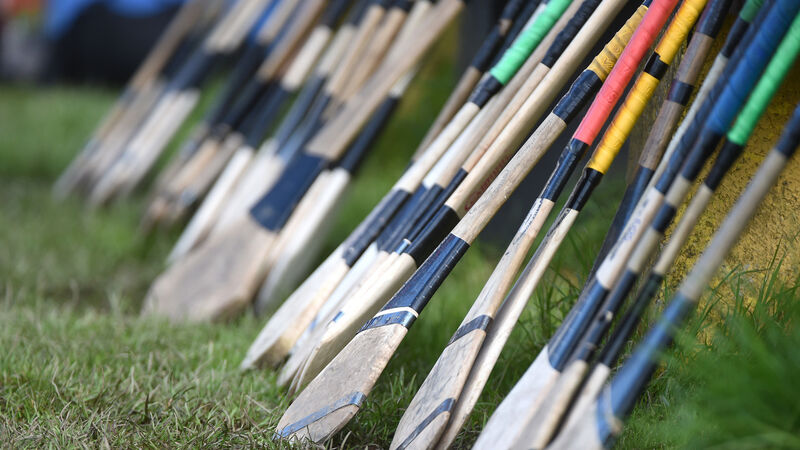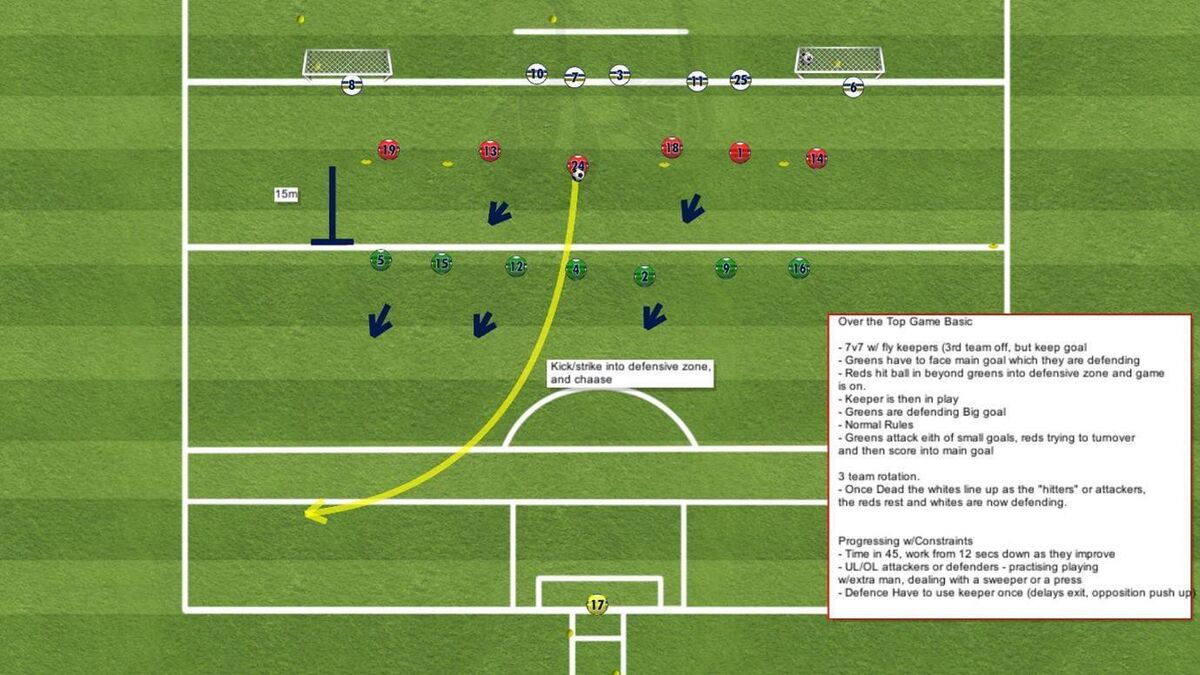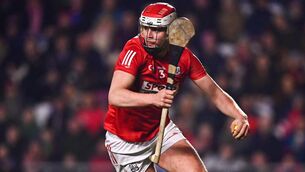Coaches must take the stabilisers off and let young players develop through free play

Young players return to pitches in all sports at the end of April; coaches need to encourage free play as much as possible. Picture: Larry Cummins
IS less coaching, as we understand it, better? Are we overcoaching and underdesigning?
Watching a kid in Ballincollig Regional Park recently I realised the genius that I had been seeing for a while but hadn’t copped fully it’s impact No stabilisers, no pedals. Instead of stabilisers on bikes now I see small kids going around in bikes that have no pedals and they just use their feet.
This is absolute genius and a brilliant example of us, for years, imposing adult visions upon children. we gave them adult bikes They fell off. we gave them smaller bikes, they still fell off. We put on stabilisers, and we reduce their ability to learn for themselves.
Were stabilisers the start of helicopter parenting?
In trying to help, did we actually damage? There is a common thread to this over the last 30 years.
However, what emerged is even better. No pedals. So now it’s a bike built for children, not for adults trying to create mini-adults. The child oversees their own destiny, their own stability and can learn on a bike with virtually no fear.
The task for the child was actually simplified, but still had instability to allow a learning effect. This is something we can definitely take into coaching.
Instability is a good thing in the right doses, it's how we learn and progress. We need to destabilise people we coach as well. By over-drilling we put stabilisers on them, this happens right up to senior level in multiple sports.
If, as proposed we design a session, and then sit back and simply observe, how will we cope? This new free time is a challenge, and it's very similar for coaches. If I'm saying nothing I am not coaching. Quite the contrary, if you are saying little you are not getting in their way, and they are getting the opportunity to explore themselves.
Drills a very stable, but boring, environment for a game that is largely chaotic, especially when being introduced to sports. And as we have previously mentioned, that jump can be too far for many and especially in more technical sports they don't stay around.
To give a familiar example of this stability emerging from instability, we can look at the Dublin Footballers and the 2019 drawn All-Ireland final. Far too much is made of one play or individual Kerry mistakes. What that game was, for me, an unbelievable example of the search for stability and a prime example of a group of decision-makers at the top of their game.
It wasn't that they spent months working on the possibilities of the Kerry three banks of four press, or multiple variations of their own kick-outs or plays. No, it’s that they have spent years developing their ability to figure things out. Being great at figuring stuff out is what all the elite teams do.
Dublin have principles and a team strategy. I'm sure they work on tactics then from game to game, whereas a lot of the teams that try to topple them have shaky strategies, if at all, and rely on one-off tactics. And we all know how that ends. Seven in a row has never been more assured, nobody is next or near having built an actual recognisable strategy that suits themselves.

Firstly let's frame it, what we have been selling for the last number of years is that there are set, ideal and linear pathways. I’m suggesting nothing is linear.
To know where we want to go, we have to acknowledge where we once were, all of us.

What do we get from sport?
Life skills are a large part. In sports, we reduce elements of our understanding and coaching emphasis down to the four co-actives – psycho-social, physical, technical and tactical elements of a sport but also benefits to the individual.
They are called co-actives because they all happen together but we tend to think about their benefits or train them individually. And that’s fine to a point, but good to be aware of it.
However modern life has clearly had an effect on free-play and general child autonomy. We have heard a lot about fundamental movement skills (I just use movement skills, FMS has also led to a mechanistic approach with coaches), but rarely about the effects on tech-tact elements that also support participation and retention long term. The truth is more and more young players struggle with strategic and tactical ideas.
This is not from lack of interest which is often the surface reaction, it's from a loss of basic exposure to more organic tactical and technical development in a broad range of skills. And again, sport and coaching have to step in to help.
What if I told you we could actually start that tactical awareness and strategic mind with six-year-olds? And without ever talking about it?
Seems mad maybe, and possibly counterintuitive considering some of the content of previous articles, but bear with me.
But what is tactical awareness? It's not just a sports thing. It's a movement thing and a life thing, and it's something that starts very young in life and it's one more critical element that's been lost by the reduction of free-play and over-structured sports.
For me, tactical awareness is as simple as finding the fastest routes to completing a task utilising space, teammates and an ability to pick up information as a game unfolds that will allow you make better and better decisions as you gain experience. This is also a life skill, and it's been eroded.
The more movements and decisions you get asked to make, the better you will become.
However, I have stolen the below quote from Naval (Tech Entrepreneur). It's about the interactions, not the hours. And we have reduced the interactions, think hours will solve the issues. It hasn’t, overly structured sport has failed. Parents have become taxi drivers, kids are less active. Training is heavily formulated.
While we can have structure, we need some chaos and fun.

Tactical decision-making has its basis in free-play and playing schoolyard games and games around the estate like tag, hide and seek, tip the can and the rest. Not to mention the hours of unstructured soccer that many people played on greens growing up.
That mix of challenges is why we often hear of younger siblings or people in a small estate emerging as elite athletes in groups. The challenge of playing with many different people of varying ability and size was these young players picking up information and making decisions over a long period of time. There are two manifestations of that in adult sport in my view: increased injuries, physically less complex movement abilities, followed by a higher number of dropouts particularly in girls, and a much less tactically astute player.
The uncountable interactions are what drove movement, activity, participation and even elite athletes, not a 'counting of hours'.
The road to creating these more decision based, active training sessions for both immediate fun and challenge as well as an eye to long term development does take an element of step back, and 'un-learning', for coaches in particular but that can be true of players also especially when they have been coached a certain way for a long time.
But the aim is to make the games and practice tasks and practices we design to be as simple as possible in design and manipulation The road to simplification will be hard more in the 'un-learning' than in actually picking up the tasks or principles involved.
Trying to forget "the way we always did it" is not easy, so we can't expect it to be immediate. So where do we start and how do we do it?

This broad idea of a pathway isn't set in stone and we know learning is non-linear, so everything within that will be non-linear also. However, having a broad idea that will no doubt match with many coaches and parents' observations of 'readiness' may help having an abstract look at things.
Tactical training for Kids? Ah, come on...
The reason I start with in mind is to really get across the point of decision making and how important that is not only to our future sporting careers but also our health (ability to avoid injury) and our long-term participation (through enjoyment). Understanding a game and enjoying figuring it out, I propose, increases the level of enjoyment and engagement. Whereas if we overwhelm an ill-prepared young teenager we risk alienating or excluding.
We can start introducing tactical games from a young age with children and right up to that puberty/post-puberty zone without ever really having to talk about it.
For children between five and 10, broadly, they are in a heightened phase of creativity. Everything they do has a heavy physical and tactical lean on it, so much of it is discovery.
So what type of games?

Games that encourage over, through or around. There are loads of games we can use that will help develop movement and decision-making from the selection above. And we can certainly just let them play out.
But one concept that could be introduced to children six to nine through broad general games with maybe a more specific lean on the sport itself as they get older is the tactical idea that most invasion sports are determined by our ability to go through, go over, or go around the opposition. And then of course the opposite is true for defending.
So if we use movement games that introduce these concepts through opportunities to move and make decisions in a fun way, we are equipping the children with a huge base for learning tactical decision-making before we ever get near talking about it. And of course many varieties of movement – but really decisions are movements, movements are decisions. Remember Perception-Action from the last article? All heavily interwoven.
Here is a very loose sample idea around what a children’s session could look like, dynamically broken up between movement games and an introduction or development (as they age) of the sport itself.
Really the structure is for the coaches to design, not for the kids. They don’t care, they want to play.

Games in the movement games list (far from exhaustive) above have elements of through, over, or around. Below we will talk specifically then how we move that on to say hitting those teenage years in a really specific way where we are working on technical aspect of let's say striking in hurling, but as a built-in element of having to play 'over'.
How can we beat a sweeper? Or use our height? Or just improve technical skill and overhead catching?
Going over will allow a lot of these elements to emerge.
Let's start with the technical for this example, and imagine we are with an U13 hurling team.
.
The principles of manipulation and task simplification remain here and can be transferred to any sport.
Striking for medium to long distance.

We want to get our team fitter? With still a nice lean on the technical. Well, we can just play it for certain periods of time.

UL/OL, put in sweepers and lengthen NML. The added element of sweepers in front of a widened NML area means we have to hit long and accurately, under pressure but also having to play heads up hurling. That thinking is the tactical element.

Special rules, time constraint, figure out opposition constraints. Figuring out the rules (different rules) given to each side is a great way to get them thinking more (so has a heavy tactical element as well obviously) and you can win the game outright by figuring out the oppositions constraint, based on the information the players are picking up from the game.
But not only is this a fun gamification of a general striking and passing practice, in this example but its a really nice way to get players picking up information about opposition. This can add a surprising level of fatigue, so just be aware of that.
Other examples of games here that you could expand on each of those areas by manipulating in whatever way you wanted.
Games like team bib-tag are fun, need strategy and will have some in-built tactical approaches. The great thing about a game like this is it is almost like being a double agent, you are giving them fun and having a hands-off approach with no sports-specific pressure, but you are introducing tools that can be used in sporting situations down the road.

A practice I stole from rugby is an extension of this that can be used in multiple sports and is a great way to talk about working the ball out, having a discussion around the press and introducing ideas of depth and width and closing and creating space. All while still "playing the game" and having sports-specific tasks and even working on a phase of play.
This is now a kind of sports-specific extension of say team-bib tag. You could even use these on the same night, knee tag for some 1v1, team-bib tag for teamwork and the 'Over the Top' game for some more sports-specific work.

This is possibly an activity again for 13 or 14 upwards.
Other variations of this game could be done six to 12 to various levels are below. At the younger ages, we could use varied goals, buckets, small nets or end zone variations. We could use softballs or handballs for variation with the smallies, whereas with the 10+ we might be able to use variations of the sport itself.
Variation 1:


Variation 3:

The possibilities are endless.
So simplify it down, and layer up on top of that as soon as progress is obvious. As coaches we will have to un-learn a few old habits in the next few years as we deal with the reality of lowering numbers, this will get worse before it gets better.
The search for stability can look ugly, but that’s where the magic is.
That's it for this month, a lot there again, but hopefully, some stuff for people to mull over and take and implement in their coaching.








 App?
App?







